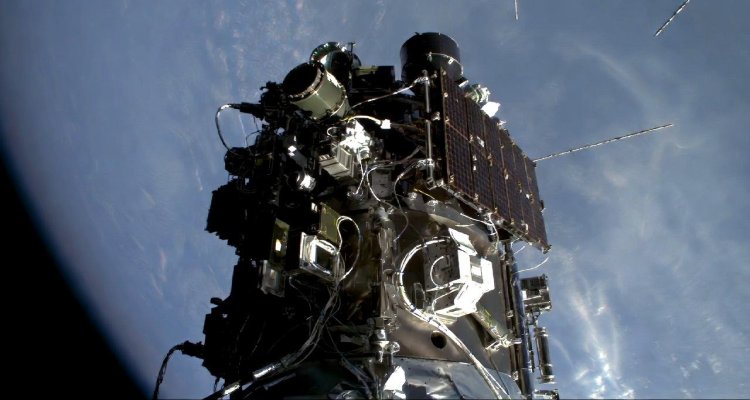Why Some Species Choose to Hide from Us Forever
Many animal species evade human detection not by accident, but by design. Discover why some creatures prefer to remain hidden—and how their invisibility is vital for survival.
Introduction: Vanishing Acts in the Wild
In a world increasingly mapped, monitored, and photographed, it may seem impossible for any living thing to escape human notice. Yet, some species have mastered the art of disappearance. These elusive animals aren’t just rare—they are purposefully unseen, choosing to hide from the human gaze. From the dense Amazon rainforest to the shadowy depths of the ocean, certain species avoid detection so effectively that they seem like ghosts of the natural world. But why do they hide? And what does their invisibility tell us about the world we’re shaping?
Context & Background: The Elusive Wild
Our relationship with wildlife is often framed by discovery—new species, strange behaviors, and remote habitats. Yet, for every animal we catalog, many more evade detection entirely. Scientists estimate that 80% of Earth’s species remain undiscovered. Some dwell in unexplored ecosystems, while others are well-documented but nearly impossible to observe in the wild.
Species like the Saola, dubbed the “Asian unicorn,” have only been seen a handful of times since their discovery in 1992. The Giant Squid, long thought a sailor’s myth, was only recently filmed alive. These aren’t just cases of remoteness or rarity; they reflect deliberate biological strategies and a growing need to escape humanity’s footprint.
Main Developments: The Science of Hiding
The tendency of species to hide isn’t merely chance—it’s evolutionary design. There are several scientific reasons why animals choose to stay hidden:
1. Predator Avoidance
For prey species, being invisible means staying alive. Camouflage, nocturnality, and reclusive behaviors are vital defense mechanisms. Creatures like the leaf-tailed gecko or glass frog use their environment to remain nearly undetectable.
2. Habitat Sensitivity
Some species are so attuned to specific environments that even minor disturbances—like a human’s presence—can alter their behavior or threaten their survival. Amphibians, especially, are notorious for vanishing in the presence of human noise or light.
3. Low Population Density
With habitat destruction and climate change, many animals exist in such low numbers that sightings become exceedingly rare. The Ivory-billed Woodpecker is emblematic of this: perhaps extinct, yet hope lingers because of occasional unverified sightings.
4. Human Avoidance Evolution
Some species have evolved a direct aversion to humans. Studies have shown that elephants in poaching-heavy areas have begun moving at night to avoid humans, even when historically diurnal. This behavioral adaptation is not unique—it’s survival instinct responding to threat.
Expert Insight: “They’re Not Missing. They’re Avoiding Us.”
Dr. Megan Owen, a conservation biologist with the San Diego Zoo Wildlife Alliance, puts it succinctly: “Many of these animals aren’t missing. They’re avoiding us—actively. Their survival depends on it.”
She emphasizes that as human presence grows—roads, cities, deforestation—species that once coexisted with us have retreated deeper. “Avoidance behavior is learned and passed down. In some species, especially primates, we see cultural knowledge guiding migration and hiding.”
A recent study published in Science revealed that mammals across six continents are increasingly becoming nocturnal in response to human activity—even species not previously active at night. “It’s a global trend,” said lead researcher Kaitlyn Gaynor. “We’re changing the animal kingdom’s daily rhythms.”
Impact & Implications: What We Lose When They Hide
When species go unseen, they are easily forgotten. And what’s forgotten is rarely protected.
1. Conservation Challenges
Invisibility hampers conservation. It’s hard to fund efforts for species the public doesn’t see or know. The less visible a species, the less likely it is to get media attention or funding.
2. Ecosystem Gaps
Every hidden species plays a role in its ecosystem. If it disappears quietly, we may not realize the cascading effects until much later. For example, seed dispersers like certain elusive fruit bats are crucial to forest regeneration.
3. Missed Discoveries
With so much left undiscovered, hiding species represent potential breakthroughs in medicine, ecology, and even technology. Some amphibians produce antimicrobial skin secretions that could lead to new antibiotics. Others hold genetic keys to climate resilience.
Conclusion: The Right to Remain Hidden
As we expand into every corner of the planet, the creatures that choose to hide from us are not merely elusive—they are sounding alarms. Their invisibility is a survival strategy in a world that often harms what it touches.
The irony is clear: the more we seek them, the more they disappear. Perhaps the better approach isn’t to chase their shadows, but to slow our steps. Give wild spaces the respect and distance they demand. In doing so, we might not just protect the hidden—we might learn from them.
Because in their silence and secrecy, these animals teach us something vital: not everything needs to be seen to matter.
Disclaimer : This article is based on current scientific research and expert interviews. Observations and quotes reflect the most recent understanding of animal behavior and conservation. Always consult updated sources for evolving data.











